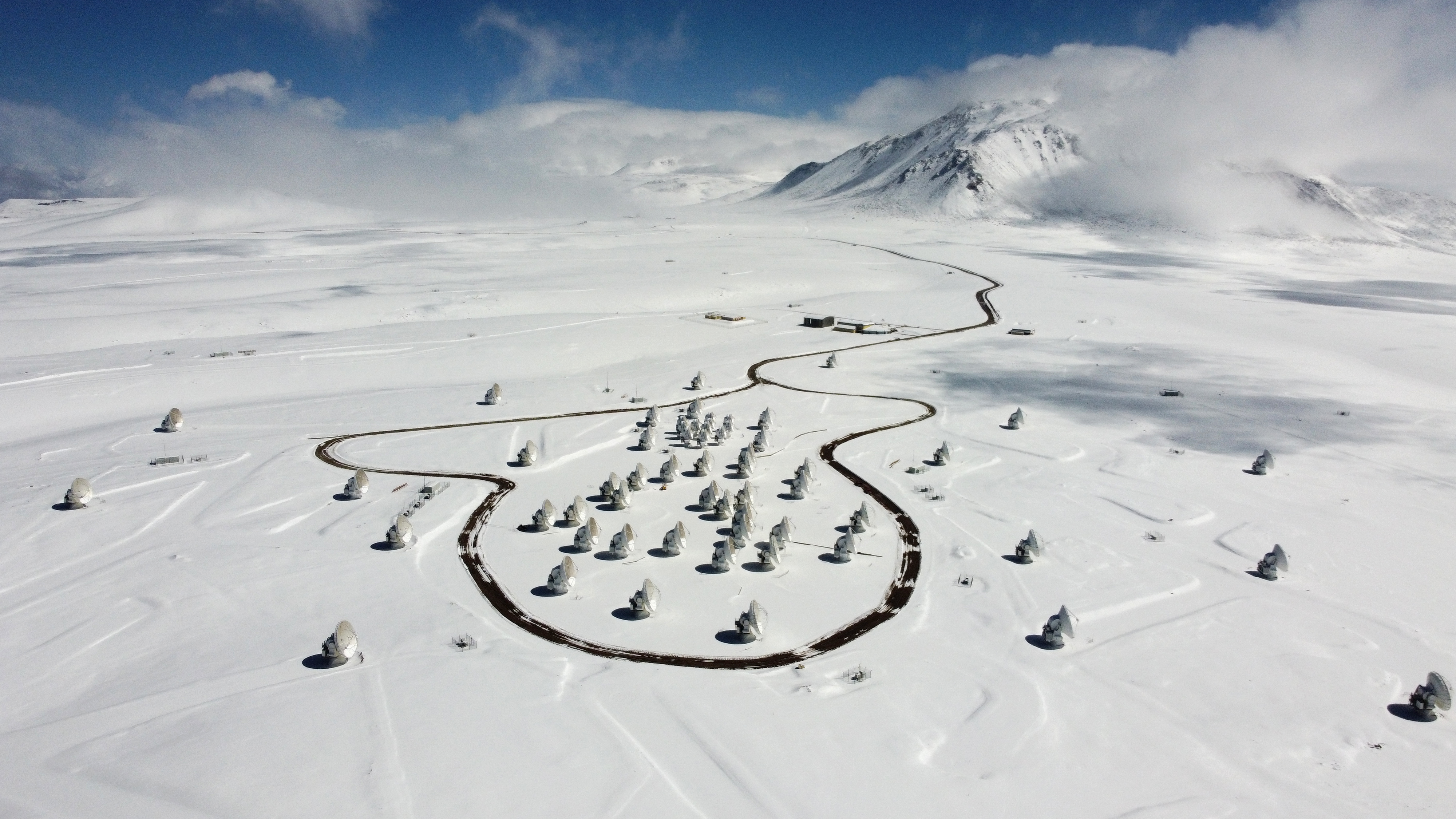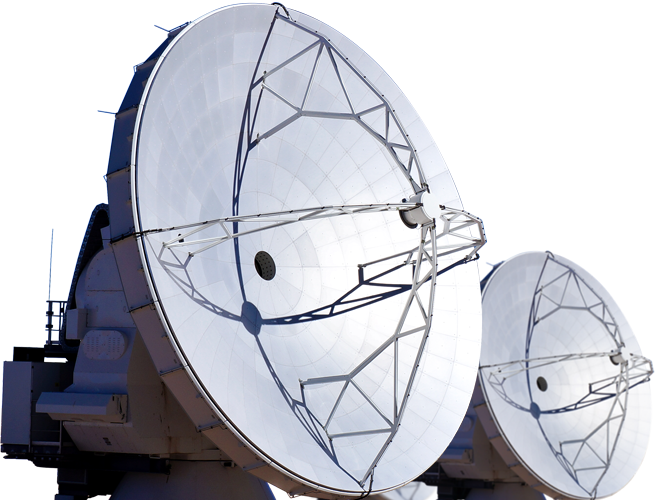What is ALMA?
The Atacama Large Millimeter/submillimeter Array is the most complex astronomical observatory ever built on Earth. Teams from North America, East Asia, and Europe merged projects to develop this breakthrough scientific instrument in northern Chile.
ALMA has opened a new window on the Universe, capturing never-before-seen details about the very first stars and galaxies, probing the heart of our Milky Way Galaxy, and directly imaging the formation of planets.
ALMA is a transformative radio telescope that can study cosmic light that straddles the boundary between radio and infrared. Most objects in the Universe emit this kind of energy, so the ability to detect it has been a driver for astronomers for decades.
Millimeter and submillimeter light is easily absorbed by water vapor in the atmosphere. The dry climate and extreme elevation (5000 meters or 16,500 feet) of the site in the Chilean Atacama Desert provide ALMA with the right conditions for detecting these faint signals from space.
Design
ALMA uses 66 high-precision dish antennas of two sizes: 54 of them are 12 meters (39 feet) across and 12 of them are 7 meters (23 feet) across. The total collecting area of this array is over 6,600 square meters (71,000 square feet).
The 12-meter antennas can be moved to different locations by custom-made Antenna Transporters in order to form arrays ranging from very tightly packed configurations only 160 meters across to wide configurations 16 kilometers across. More extended arrays give ALMA a zoom lens for finer details, while more compact arrays give better sensitivity in order to observe dimmer objects.


In addition to the movable array of 12-m antennas, there is the Atacama Compact Array (ACA) of twelve 7-m antennas and four 12-m antennas that images large-scale structures like giant gas clouds. The ACA has two configurations, one of which is a north-south extension to provide better coverage of sources that are either very far north in the sky or very far south.
The resolution of ALMA images depends on both the configuration of the antenna dishes and the wavelengths at which they observe. In ALMA’s most compact 12m array configuration, the level of detail it can see ranges from 0.5″ at 0.5 mm (650 GHz) to 8.5″ at 7.5 mm (40 GHz). In its most extended 12m array configuration, ALMA’s resolutions range from 9 mas at 0.7 mm (460 GHz) to 110 mas at 7.5 mm (40 GHz).
Do you wish you could visit ALMA?
Isolated on the Chajnantor plateau at 16,000 feet (5,000 m) in Chile, ALMA is not easy to get to, but you can get a personal tour here without even a passport.






